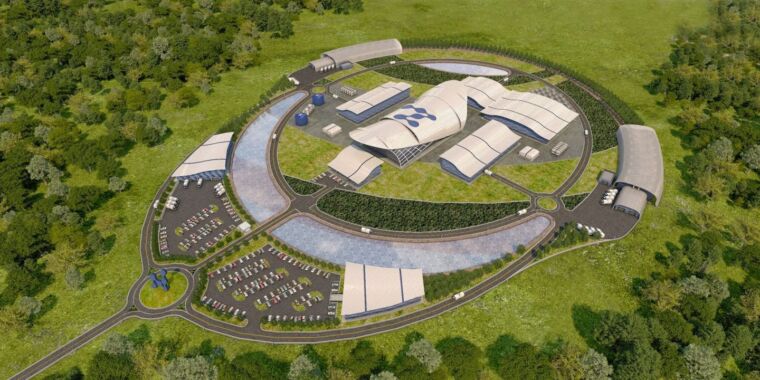- cross-posted to:
- technology@lemmy.world
- climate@slrpnk.net
- cross-posted to:
- technology@lemmy.world
- climate@slrpnk.net
First planned small nuclear reactor plant in the US has been canceled::NuScale and its primary partner give up on its first installation.



This. Green energy works best when complimented with nuclear energy. Then, we can ween away from big oil.
It’s the opposite. Nuclear outputs as close to 24/7 as possible, you can’t ramp it up and down to accommodate variable output from renewables for practical and economic reasons.
I mean you can vary it pretty significantly depending on the reactor type, but even if you couldn’t you can still put the energy to work in alternative ways, such as pumping water up into reservoirs/damns to generate energy at other points, or using the excess energy to split water. There are many ways to use excess energy.
So your solution to excess nuclear is to store it. The solution to shortfalls of renewables is also to store it.
Why do we need nuclear?
But storage without inpacting available energy requires an excess, and the current shortfall of renewables is that there isn’t enough energy produced for a significant excess (same goes for nuclear). Either way I was addressing the literal aspect of energy generation being 24/7 with nuclear.
Not to mention I could see viable uses for nuclear still, especially in processes that are effectively 24/7 hot water production via heat exchangers for providing heating to literal cities, energy production for large arc furnaces.
And don’t mistake my view of nuclear as not seeing the benefits of renewable, my father lived on a boat where the heating and appliances were all run via solar panels and forklift batteries for more than 10 years of his life.
It’s relatively easy to get to 95% renewables. We have tons of historical weather data on wind and sun patterns. You can then calculate the extent of the lull when you won’t have either one. Pad that number, then put in enough storage to cover it. Natural gas may be needed for that last 5% (it’s a lot more difficult to get renewables to 100% than 95%), but that’s minimal.
This is all achievable by 2030, the time when we want to drastically cut emissions. In contrast, there is no plan that gets nuclear in place by 2030. If you had all the permits signed and dirt starting to be dug today, you couldn’t make that time line.
Nuclear does not help us reach these goals. It takes too long, is too expensive, and doesn’t synergize with renewables well at all.
You can do the same with excess power from renewables though. My point was that you need something to fill in the gaps when renewable output is low, whether that be from batteries, pumped storage, peaker plants, etc.
Nuclear doesn’t fit in here, there are no nuclear peaker plants.
The problem with solar is that the sun doesn’t shine overnight. The good thing with that is that we use much less power overnight than we do during the day.
If you’re relying a lot on solar, you need to build a big-ass battery that you charge during the day and use at night.
Alternatively, you build a nuclear or gas plant sized to overnight usage and run them 24/7. Then, you build way smaller batteries to handle dispatchability and smoothing demand over the course of a day. Nuclear is good for baseline power, and doesn’t come with the environmental costs of a gas plant. It has a niche.
HOLY SHIT THE SUN DOESN’T SHINE AT NIGHT, WHY HAVEN’T WE THOUGHT OF THIS?
Peak load is during the day, so initially it’s not really a problem. Going from a grid that’s 0% solar to 10% solar is really easy. The solar is going to just displace peaker plants. You don’t really have to worry about night.
Going from a grid that’s 70% solar to 80% solar is way more expensive, because you’re probably using all that power at night.
You don’t go all in on solar, that’s dumb and unnecessary. The wind blows when the sun doesn’t shine. We have lots of historical data on how the two would perform and how long a lull would be when neither are performing. Pad that number, put in enough storage to cover that period, and there you go.
Getting to 95% solar/wind/storage is relatively easy. Nuclear does not help this mix. It just makes it more expensive.
Big if true. Winds tend to be stronger at night though.
Or pumped hydro, compressed gas, molten salt, green hydrogen, etc.
Base load. See here: https://cleantechnica.com/2022/06/28/we-dont-need-base-load-power/